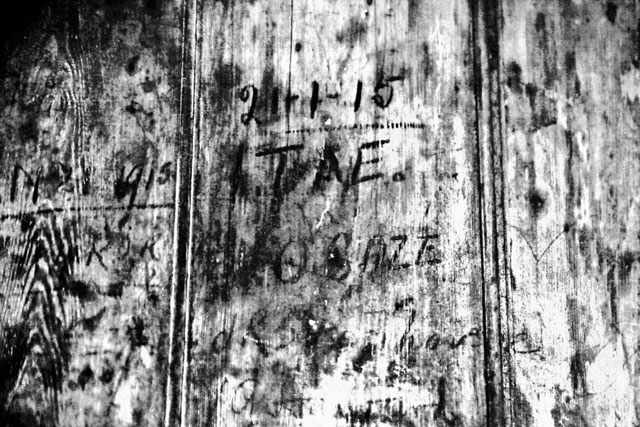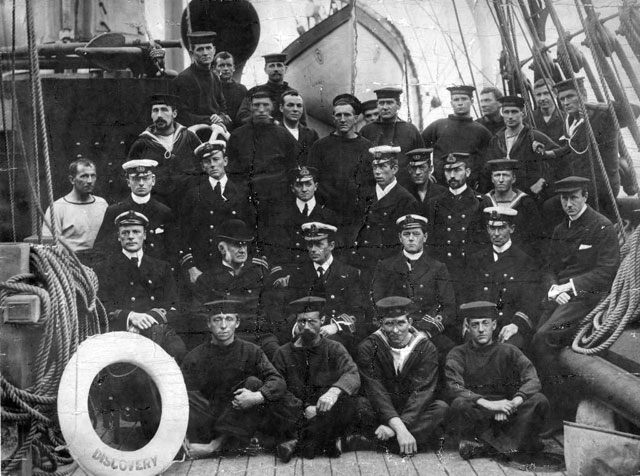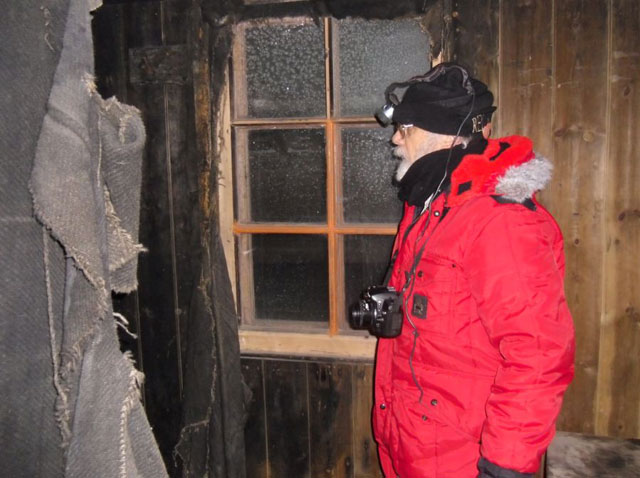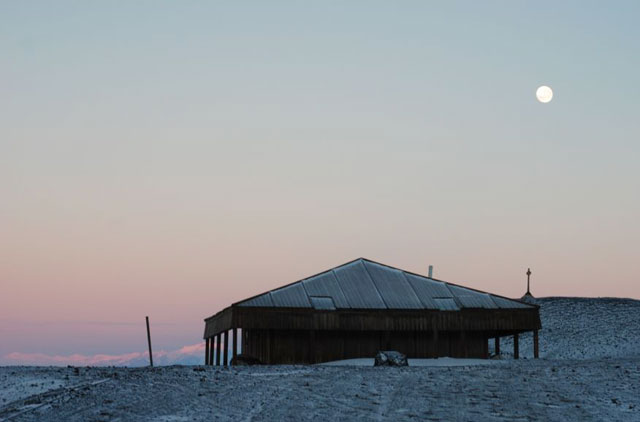The writing on the wallMcMurdo Station man documents historic 'graffiti' at Discovery HutPosted June 15, 2012
Some people pass the long winter months of isolation at McMurdo Station Matthew Nelson has turned a keen interest in polar history into a fulltime off-hours project to document and research the men who once scribbled their names on the wooden walls of an iconic structure that dates back more than century to the Heroic Age of Antarctic Exploration. “I just got really excited about these names. Every time I come across a name, I do as much research as I can on it,” Nelson said during a recent phone interview from McMurdo Station, where he works as a satellite communications engineer for the U.S. Antarctic Program (USAP) Nelson is back in Antarctica after about a 15-year absence, when he worked on various satellite projects for NASA During that winter in 1996, he would often visit Discovery Hut A friend was the first to point out a couple of names during one visit to the hut, which was constructed out of Australian jarrah wood based on a design better suited to the heat of the Outback than an Antarctic winter. (Scott eschewed actually living in the drafty hut, preferring to remain aboard the expedition ship, Discovery, after which the hut is named.) The “graffiti” that Nelson saw back in 1996 belonged to ship’s storekeeper Harry Ernest Wild and general assistant Victor George Hayward, who were not members of the Discovery adventure but the Ross Sea Party, a little-heralded expedition that arrived about a decade later in support of Ernest Shackleton’s attempt to cross the entire continent via the South Pole, officially called the Imperial Trans-Antarctic Expedition (ITAE). That was the famous Endurance expedition, when Shackleton’s ship was crushed in the sea ice, but he managed to save himself and all his men in what many consider to be one of the great and final epic adventures of the Heroic Era. The Ross Sea Party, under the command of Aeneas Lionel Acton Mackintosh, was charged with laying supply depots for the second half of Shackleton’s venture, from the South Pole to the Ross Sea. Mackintosh had sent six men to Discovery Hut on Jan. 18, 1915, to check on the condition of the expedition base. The ship picked them up a few days later, on Jan. 21 — the day that all six men signed one of the walls in the hut. Since mid-March, Nelson has been leading tours of the Discovery hut, rediscovering the names of Wild and Hayward, and finding the four additional names of general assistant Irvine Gaze, first officer Joseph Stenhouse, dog handler Ernest Joyce and chief scientist Alexander Stevens, along with the date and the ship’s name, Aurora. 
Photo Credit: Deven Stross
Graffiti from the Ross Sea Party, part of Shackleton's Imperial Trans-Antarctic Expedition (ITAE), 1914-17.
That graffiti had been documented previously by the New Zealand Antarctic Heritage Trust (NZAHT) “Matt has been a fantastic resource and his interest in the work being conducted by the Trust really injects energy into the project,” said Susanne Grieve, lead conservator for NZAHT at New Zealand Antarctica’s Scott Base, located near McMurdo Station. “I have been collating Matt’s images and reports on the signatures to provide to AHT,” added Grieve via email. “They are currently in the planning stages for the conservation work on Discovery Hut and, hopefully, when they begin the carpentry and objects conservation, Matt’s reports will be helpful.” Said Nelson, “To me, when I find a name, even if I’m not the first to document it or find it, it’s like climbing a mountain, even if it’s been climbed before. I’m not much of a mountain climber, but I can relate to it. Once you reach the top, that’s your personal success — you don’t have to be the first to get the thrill.” But there have been further discoveries during Nelson’s guided tours of the hut, which is protected under the Antarctic Treaty System |



For USAP Participants |
For The Public |
For Researchers and EducatorsContact UsU.S. National Science FoundationOffice of Polar Programs Geosciences Directorate 2415 Eisenhower Avenue, Suite W7100 Alexandria, VA 22314 Sign up for the NSF Office of Polar Programs newsletter and events. Feedback Form |




